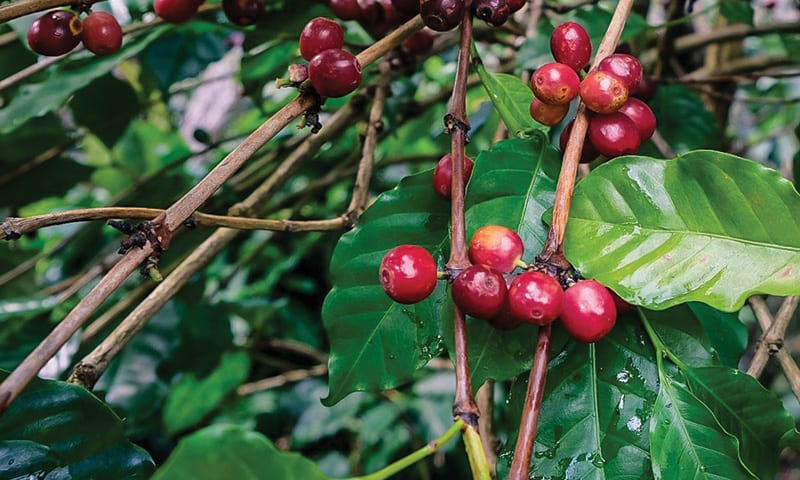
CATIMOR – AN INTRIGUING VARIETY
Despite the increasingly wide array of Arabica varieties being grown across Southeast Asian coffee-producing countries, one still crops up time and again: Catimor.
There are a number of eminently sensible reasons why Catimor has long been favoured by farmers and producers in this part of the world: the fact that it’s a hardy, disease-resistant and high-yielding plant certainly helps.
On the downside, however, the shrubs have a habit of not living for very long and the coffee’s final taste – the proof in the cup – is sometimes considered disappointing.
When Catimor is referred to in specialty coffee circles, the word ‘controversial’ is often not too far away. So maligned and misunderstood is this unfortunate variety that producers, exporters and importers of Southeast Asian coffees to this day still have a habit of glossing over or playing down the presence of Catimor in their offerings.
But the fact is, unless you’re certain that the coffee has come from an alternative single variety, many coffees from this region will have had some Catimor present in the mix.
Which is no bad thing!
When grown with love in this part of the world, processed with care and stored appropriately, Catimor on its own or when harvested together with other varieties is more than capable of reaching the mid to high 80s in cupping sessions.
We’re on the cusp of extraordinary changes in Southeast Asia as processing capabilities continue to improve and new varieties planted by forward-thinking farmers begin bearing fruit – but for the purposes of this piece, let’s look a bit more specifically at Catimor.
Why The Controversy?
Like many of the great tasting and fascinating varieties so beloved by the specialty coffee world – such as Pacamara and SL28 – Catimor is a cultivar that was, rather unromantically, created in a lab.
On one side of its family tree lies Caturra, the highly-rated Bourbon natural mutation from Brazil. On the other side lies Hibrido de Timor (or ‘Timor Hybrid’ or ‘Tim Tim’), the somewhat bizarre result of the only known natural mating of a Canephora (Robusta) plant with an Arabica plant, taking place in the early 1900s on the island of Timor in Southeast Asia.
The supposed taint of Robusta has led some to dismiss Catimor out of hand as a potential specialty coffee variety. While we’re here to tell you this is well off the mark when grown in Southeast Asia, there does seem to be some substance to this assertion when it’s grown in other parts of the world. For example, Brazil’s ill-fated experiments with Catimor in the 1970s still linger in some people’s minds, when the quality coming out of those (since uprooted and scrapped) plants was perversely hindered by its ideal conditions for growing Arabica.
More recently, World Coffee Research’s ground-breaking Marsellesa F1 hybrid which also shares Timor Hybrid in its parental lineage has received rave reviews in international cupping.
Catimor seems to do best when grown at altitudes lower than 1650 masl and where there is more rainfall. Due to the higher protein contained in Canephora’s chemical structure, when grown outside of these conditions Catimor can result in a vegetal, astringent cup.
So Is Southeast Asian Catimor Any Good?
Yes!
Many independent cuppings will prove that, while it can be difficult to get right, Catimor can produce excellent flavour.
From a roaster’s perspective, the final taste can often be crisply acidic with a pleasantly sweet aftertaste, in fact often very close to Bourbon. But with some experimentation, there’s a lot more that can be gleaned from this intriguing and beguiling variety when grown in Southeast Asia: deep and complex flavours of brown sugar, vanilla, strawberry, spice and nectarine in some of our more memorable cuppings.
But don’t just take our word for it – try for yourself! We’d love to share some samples with you and hear your feedback.
